Simplicity, Rationalism, and Austerity
May 26, 2008
Article written by Antonio Román
In Central Europe, the term neue Einfachheit seems to be coming into its own in order to group current architectures that point towards a new simplicity.1 New reviews of rationalism have appeared in countries with a deep-rooted gothic tradition, such as Switzerland, Austria, Germany, and even Great Britain. Some recent reviews relate this fact to the 20th century avant-gardes.
Nevertheless, in my opinion, these architectures are more closely related to certain architecture which arose around the 1950’s than to the avant-gardes. The consolidation from the postwar period onwards of the so-called second nature, this one man-made, directly affects current architecture: i.e., the reconsideration of industrialization, of economy, and environment. Nowadays, this fact allows architectural positions pointing towards austerity, tinged with morality in the avant-gardes, to range from pragmatism to ecological consciousness.
To call these architectures neue Einfachheit, clearly evoking 1920’s neue Sachlichkeit, seems to reflect an approach based only on formal appearance. I consider that this new simplicity would be better framed, given its rigor, within the wide context of rationalism. If rationalism is present in any of the arts, that art is surely architecture. Architectural knowledge over the last two hundred years has struggled between rationalism and empiricism, which is, between defining knowledge as a priori or a posteriori, as Alan Colquhoun stated; he remarks that, architecture being an art, speaking about rationalism in architecture includes not only the relations within knowledge, but also the relation between rationalism and feelings. A notion in continuous evolution, contemporary architectural rationalism embodies, according to Colquhoun, logical constructionism, functionalism, and formalism; related examples are industrial architecture or that of Adolf Loos, Hannes Meyer, and Mies van der Rohe (2)
The reviews of these avant-gardes’ tenets blossomed in the 1950’s; neoempiricism, neorealism, and new brutalism became new topics in architecture. In this context, it might be appropriate to recall the then revisionist role of the functionalist character of the Modern Movement, the revisionist role of the tenth CIAM; held in Dubrovnik in 1956, the tenth CIAM saw the birth of Team 10. I would like to mention Alison and Peter Smithson, promoters of this group and of new brutalism, and specifically a key work of theirs: the Secondary School at Hunstanton, Norfolk, England, 1954. In so doing, I feel it may be possible to trace some guidelines which might be useful in order to evaluate the present.
Architects Alison and Peter Smithson and engineer R.S. Jenkins of Ove Arup & Partners held a revealing discussion on the Hunstanton school. In this discussion, the conflicting viewpoints of architects and engineers, so often neglected but always present, were revealed. Thus, upon the rigorous use of steel rolled sections, while the architects talk about avoiding Mies van der Rohe’s formalism, the engineer talks about saving steel using the plastic theory; while the architects talk about the uniqueness of the design, the engineer refers to the possibility of multiplicity; while, for the architects, the brickwork helps to give an appearance of “permanence,” to the engineer it is a means of stiffening the steelwork.(3)
One side seems to be searching for ultimate values; the other side, for mechanistic causes. The engineer’s viewpoint is not far removed from the traditional Hannes Meyer sachlich -objectiveformula on architecture: function x economics.
In spite of the disagreement, the observer might not appreciate essential differences between industrial architecture and the Smithsons’.
A subtle line seems to divide the artistic quality of new brutalism and engineering.
From this discussion, a double reading can be derived: either opposing engineering’s tenets to those of architects; or revisiting architectural tenets themselves. Thus, we would have optimization versus formal rigor, and the latter versus formalism; industrialization versus artistic uniqueness, and the latter reconsidered within an industrialized milieu; function versus environment, and the latter in relation to the user. If, as is inferred from the discussion, the engineering tenets embody a strong argument based upon economy, architecture’s tenets reflect a revision of architectural rationalism. The merging point I would like to deal with concerns the line beyond which certain architectures are regarded as slick; and how certain architectures, until very recently considered as non-charismatic, are today considered updated and have become referents for einfach or simple works.
Nobody doubts the influence of economy in building; it has even been said that “Form follows finance,” alluding to the influence of economic development on building area limitation. Nevertheless, for instance in the field of structures, among a great deal of designers the rules of thumb based not only on safety, but on mechanical efficiency and structural weight saving, are still in fashion. However, if in 1930 the ratio of material cost to labor was 1:1, in 1950 it was about 1:1.5 and, continuing its geometric growth, in 1990 it was 1:2.5. If the growing relevance of labor changed the criteria of optimization, the crucial aspect is, in my view, from which point of the design process it is possible to optimize. Optimization specialists agree that in the conceptual design stages, which are critical, mathematical programming methods are not useful compared to others such as experience or intuition (4)
In the Hunstanton school the procedure began with a model of frames in the main body, and then to use the plastic theory and welding; but for the Smithsons the issue was to achieve pieces and assemblage more precise than Mies van der Rohe’s. Formalist rationalism generally proceeds like this: refining models. Nevertheless, logical constructionism and functionalism very often resort to invention. Such is Buckminster Fuller’s case with his Dymaxion house, 1940, proposing new optimal forms.
However, we should highlight the revisionist side that implies accusing Mies van der Rohe of formalism. His inscrutable formula “beinache nichts”, almost nothing, acquires a meaning of a nearly mathematical succession in the Smithsons: in Hunstanton there is not only greater rigor in details, assemblage, use of standard elements, but in the role these details play in the overall building: “Each piece of steel supports, defines and decorates the space it creates,” the Smithsons say (5)
Another aspect related to economy, and also to our perception of both avant-gardes and postwar architecture, concerns industrialization. A consequence of the alliance of capital and social division of labor, industrialization is not only a reality when building but also when designing. In a way, to the avant-gardes materials were still largely a craft product. For new brutalism materials are like objets trouvés, in a clear artistic affiliation to Dadaism. If new brutalism involved a revision when designing with industrial materials, today a great deal of architects use a repertoire of industrialized materials as starting points of their designs.
Materials are not only objects found in a second nature, but even close artistic techniques such as assemblage or bricolage entered into the contemporary way of designing. In a way, these procedures involve a “labor economy,” a kind of optimization. Within this context and related to the contemporary debate on artistic quality in architecture, on aura, it would not ake sense to base it upon the traditional opposition of the industrialized versus the craftmade. From this perspective, artistic quality would be rooted, in my opinion, in the self will of the design procedures regarding materials, in the “reverence for the materials” the Smithsons refer to (6)
While economy is inherent in engineering tenets, another related factor is the primacy of function. Nevertheless, the motto that form follows function was questioned in the postwar eriod. The functionalist tenets that guided Albert Kahn’s industrial architecture or Alexander lein’s studies on minimum dwelling did not question that form was a direct result of function. However the studies of behavior that arose from structuralism pointed towards the non-existence of a neat correspondence between form and function. Thus, examining the plan of Hunstanton, we see how the main body’s stair shafts multiply to ten, something that from a strictly functional viewpoint holds no justification. When the Smithsons express “We see architecture as the direct result of a way of life” they are really stating a revision of the Modern Movement’s functional tenets (7)
Let us take as a related example Mies van der Rohe and Ludwig Hilberseimer’s Lafayette Park complex, Detroit, 1955. Its design represents a significant merging point of the two architects’ careers, which the Smithsons differentiate in their treatment of repetition: Mies van der Rohe’s includes the vital aspect, whereas Hilberseimer’s does not (8)
Perhaps the present reconsideration of Hilberseimer’s architecture is due to its look, tinged with unwonted vitality, contrasted with certain results of postwar mainstream architecture. Having spoken about architecture as a result of a way of life, maybe we should examine whether a revision of composition architectural features lies beneath. To do so, it may be pertinent to trace the Western perception of Japanese architecture, such an influence in the Modern Movement. We will never know what came first, the photographic views of Wabi architecture or the compositions of De Stijl, or even of Bauhaus. Nevertheless, the perception of Japanese architecture that the Smithsons offer us in their book Without Rhetoric is radically different. The human factor is present and what was a mere plastic composition for the avant-gardes, for new brutalism becomes a result of the Wabi life of renunciation; a result opposed, they say, to “materials as luxury” in Mies. What could be seen as the consequence of the Gestalt laws of perception, reduced to surface, moves into the space; in this way it touches the ensemble of sensations, as a Robert Morris group of sculptures would do. Let us take the plan of Hunstanton and look at the further elaboration of the basic scheme, only understandable from the experience of space. From this perspective, the aura of the piece of architecture moves to the experience of space (9) As a coeval example, and at the same time an inheritance of both De Stijl and Bauhaus, we find Max Bill’s building for Hochschule für Gestaltung, Ulm, 1953: an example that will guide the creation of sober gute Form in postwar European design.
To speak about an aesthetic of renunciation, of austerity, reminds us of the puritan past of some of these gothic countries. A puritanism not only exported to America, as in the Shaker communities, but present in the De Stijl architecture’s theosophical substratum, and one that reaches Team 10. Perhaps the edifying character of these doctrines leads us to relate them with the present boom in ecology.
Maybe the last ideology, ecology came into its own at the end of the 1950’s like consciousness facing the consequences of second nature. Perhaps since 1992, after the Rio de Janeiro declaration on environment and development, the Earth Charter, general awareness of the planet’s limited resources has become general. There is a concern for rationalization of resources, for universal values, that awakens a new ethic. Despite this, today the alliance of ecology and engineering is a paradox.
Buckminster Fuller visionary architecture, frequently derided, is today a seriously revisited precedent. Its tenets of energy savings, rationalization of work, low costs, and “total design” are those that essentially induce engineering companies such as Ove Arup to be allied with architects conscious of the necessity of austerity. The architecture resulting from engineering tenets becomes, along with ecology, the guardian of the planet.
Thus, current architecture based upon principles of simplicity and a bedrock of austerity, exhibits multiple reviews of rationalism, and shifts complexity to realms beyond the formal.
Something we can say here is that contemporary architecture is never found in a “pure artistic position,” it always shows slanted views. Thus, for example, Peter Zumthor’s Kunsthaus Bregenz project, Austria, 1991, shows a consciousness for energy saving with its exterior double wall; but allows other readings of will of austerity, conveyed in its spatial organization. A piece of work such as Florian Beigel and Philip Christou’s apartment renovation at Harlow, Essex, 1994, demonstrates, using elementary industrialized materials, a major concern for landscape; and, also showing consciousness for energy saving, it exhibits a revision of neoplastic tenets from the viewpoint of composition variation. Herzog and de Meuron’s prototype for the Olivetti Bank, 1993, reveals a mediating and edifying will with slogans, maybe ironic, written on the façades: “We help you to be flexible through standardization, to simplify the complexity of banking;” and at the same time it exhibits a simple plan that, recalling J.N.L. Durand’s timesaving partis, converts a great deal of the complexity into flexibility. These are some examples of buildings which appear simple, rational, austere; this does not mean they are any less complex, less rich, less impassioned.
Articule published in a+t 8. Low Cost
Notes
(1) Vittorio Magnago Lampugnani uses the term in his essay “Die Neue Einfachheit. Mutmaßungen über die Architektur der Jahrtausendwende,” DAM Architektur Jahrbuch 1993, Architecture Annual. (Deutsches Architektur-Museum, Frankfurt am Main). München, New York: Prestel, 1993, pp 9-12. Also published in German and English as “A New Simplicity. Reflections on Architecture at the Turn of the Millenium.” Europäische Architektur 1984-1994 European Architecture. [Barcelona, Frankfurt: Fundación Mies van der Rohe, eutsches Architektur-Museum, 1995].
(2) Colquhoun, Alan. “Rationalism: A Philosophical Concept in Architecture.” Modernity and the Classical Tradition. Cambridge, Mass.: The MIT Press, 1989, pp 57-87. Published originally in Baldus, Claus (ed). Das Abenteur der Ideen: Architektur und Philosophie seit der Industriellen Revolution. Berlin: Internationale Bauausstellung, 1987. Colquhoun speaks about both logical constructionism and logical atomism based on Bertrand Russell’s theories.
(3) “Secondary School at Hunstanton. A discussion between the architects (Alison and Peter Smithson), the engineer (R.S. Jenkins of Ove Arup and Partners) and Editors of the Journal.” The Architects’ Journal, September 10, 1953, pp 323-28. For the mention of this discussion I am indebted to Peter Collins in his book Architectural Judgement. London: Faber & Faber,
1971, p 194.
(4) Kirsch, Uri. Optimum Structural Design. Concepts, Methods and Applications. New York [...]: McGraw-Hill, 1981, p 3. The relationship between material and labor is based on Lin. T.Y; Stotesbury, S. D. Structural Concepts and Systems for Architects and Engineers. New York [...]: Van Nostrand Reinhold, 21988, p 492.
(5) “Structurally, our aim was to use steel as an architectural material, but to avoid the formalism of Mies van der Rohe. Each piece of steel supports, defines and decorates the space it creates.” The Architects’ Journal, September 10, 1953, p 323.
(6) Smithson, Alison and Peter. “The New Brutalism.” Architectural Design, January 1955, p 1.
(7) “What is new about the New Brutalism among Movements is that it finds its closest affinities, not in a past architectural style, but in peasant dwelling forms. It has nothing to do with craft. We see architecture as the direct result of a way of life.” Ibid.
(8) Smithson, Alison & Peter. Without Rhetoric. An Architectural Aesthetic 1955-1972. Cambridge, Mass.: The MIT Press, 1973, pp 38, 39.
(9) The concept of aura as “unapproachability” in Walter Benjamin’s seminal text and its association with haptic perception have been highlighted by Wilfried Wang in his essay “In Search of Aura.” Machado, R.; El-Khouri, R. Monolithic Architecture. New York, Munich: Prestel, 1995, pp 62-71.


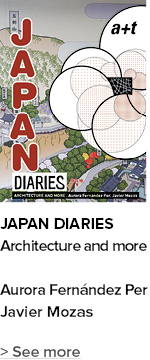






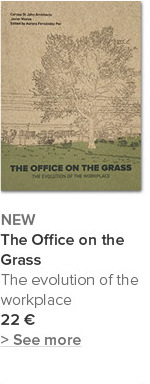

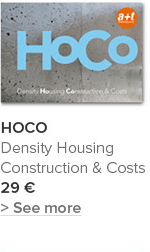

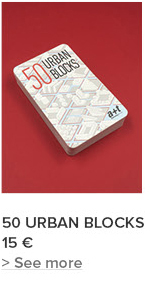
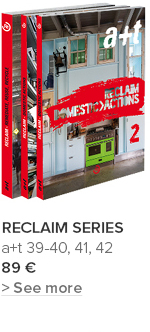

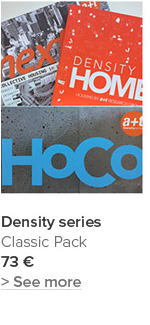





 I've read and agree to
I've read and agree to 


